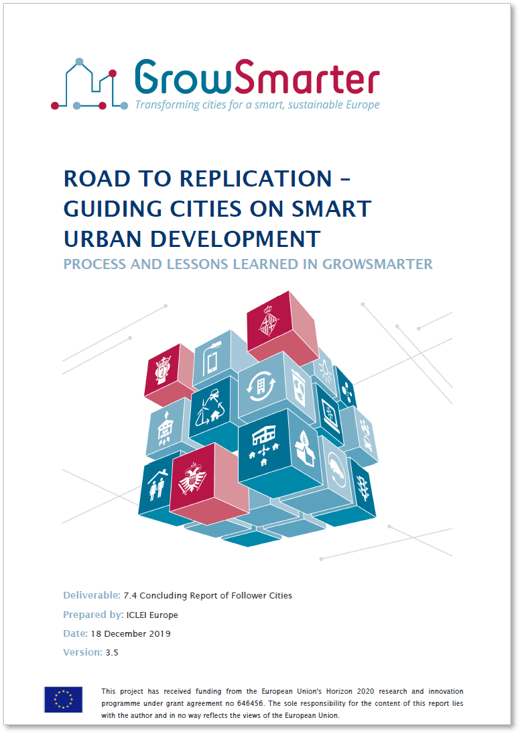The GrowSmarter concluding report presents the outcomes of a five-year replication process in which five “Follower Cities” — Cork, Graz, Porto, Suceava, and Valletta — sought to replicate smart urban solutions initially developed in the “Lighthouse Cities” — Stockholm, Cologne, and Barcelona. Funded by the EU Horizon 2020 programme (Grant Agreement No. 646456), the project targeted sustainable urban development through 12 groups of smart city solutions in areas such as low energy districts, integrated infrastructures, and sustainable urban mobility.
Key Results
The Follower Cities successfully planned or implemented 11 out of 12 smart solution packages. Implementation levels ranged from full deployment to detailed future planning. Notably:
-
Smart mobility solutions were the most successfully replicated, with Cork and Valletta fully implementing solutions such as electric vehicles and smart traffic management aligned with national low-carbon strategies.
-
Integrated infrastructure solutions, such as smart lighting and big data platforms, were implemented or planned in cities like Suceava and Porto. These efforts leveraged local energy efficiency programs or municipal digital strategies.
-
Low energy districts, including deep energy retrofitting of buildings, faced greater regulatory and stakeholder engagement hurdles. Still, Cork executed deep retrofitting in social housing, while Suceava planned similar efforts.
The replication process was structured around the Integrated Management Cycle (IMC), guiding cities through five stages: baseline assessment, implementation planning, political approval and stakeholder engagement, project execution, and monitoring.
Technologies and Innovations
Several innovations and technology applications were emphasized:
-
Smart Building Refurbishment: Use of advanced insulation, LED lighting, and energy monitoring in social housing.
-
Smart Lighting: Integrated lampposts as energy-efficient communication hubs (e.g., Suceava and Porto).
-
Open Urban Data Platforms: Porto and Graz planned platforms to integrate sensor data, manage services, and improve city operations.
-
Alternative Fuel Vehicles and Charging Infrastructure: Implemented in Valletta and Suceava, with measurable reductions in energy use and CO₂ emissions.
The report provides quantitative data from Suceava, where smart lighting resulted in an annual energy reduction of 1,814 MWh and a 1,271 tCO₂ decrease.
Lessons and Challenges
Key lessons from replication include:
-
Engagement is essential: Especially for low energy district projects, involving residents and stakeholders early improved adoption and relevance.
-
Smart mobility aligned well with existing city and national strategies, making implementation more straightforward.
-
Business model development remained challenging, particularly for integrated infrastructure projects requiring complex stakeholder partnerships and financial arrangements.
-
Performance monitoring using KPIs was crucial. Cities like Cork and Suceava tracked metrics such as energy savings, improved Building Energy Ratings (BER), and GHG reductions to validate replication success.
Recommendations
For local governments:
-
Integrate smart solutions into urban planning frameworks.
-
Allocate budget for public participation and internal capacity building.
-
Align replication with existing strategies and goals.
-
Use KPIs to measure social, environmental, and economic impact.
For national and EU authorities:
-
Adapt regulatory frameworks to reduce smart city implementation costs.
-
Support demonstration projects and use learnings to evolve policy.
For industry:
-
Focus on citizen-centred, scalable solutions.
-
Strengthen local partnerships and co-develop solutions with municipalities.
In summary, GrowSmarter provides a roadmap for cities seeking to replicate and scale smart solutions. The integrated and collaborative approach allowed cities to tailor replication to local needs, driving sustainability goals while building technical and governance capacities.

